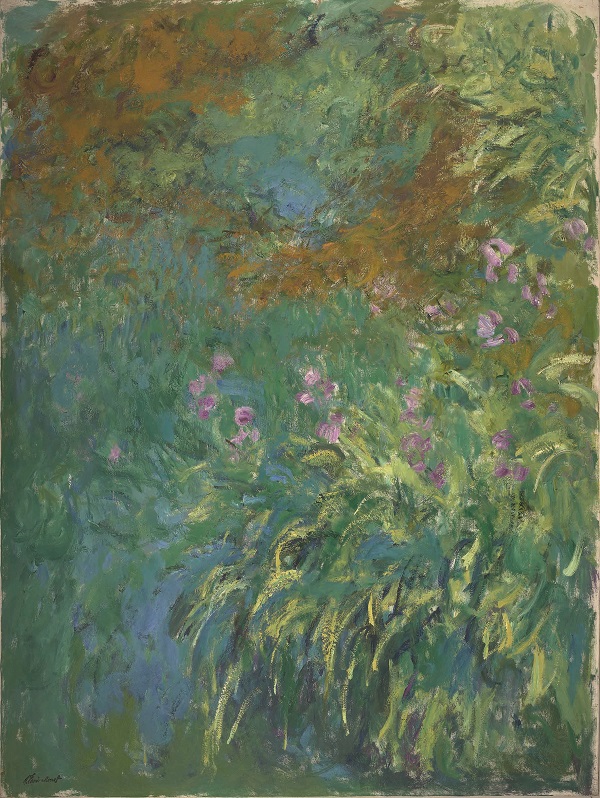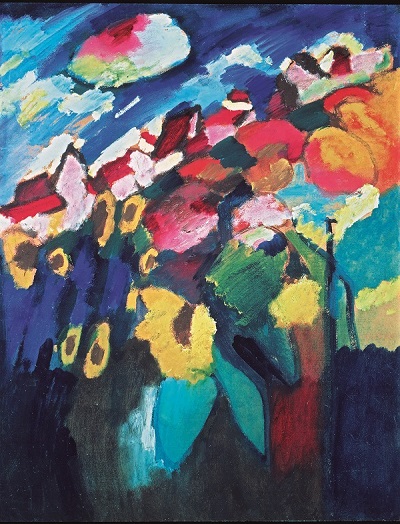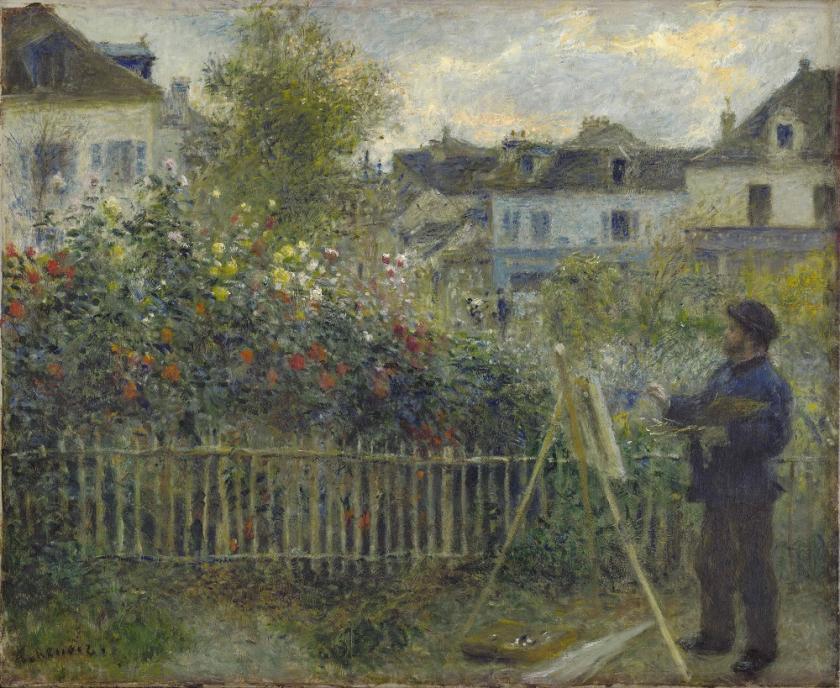Painting the Modern Garden explores the interstices between nature and ourselves as revealed in the cultivation of gardens, that most delightful and frustrating of occupations, and an almost obsessive subject for many artists. About 150 paintings from the 1860s to the 1920s, gathered together from private and public collections in North America and Europe are on view, amplified by letters, plans, documents, photographs and illustrated books on horticulture.
The exhibition embraces not only artists’ responses to gardens from the late 19th century to the early 20th century, but obliquely the new culture of the cultivated domestic garden that was becoming ever more significant. The show is uneven, and several of the less familiar names are probably deservedly so, but that is because the purpose is twofold: to explore a new interest and preoccupation of both the middle classes and the artists whom they patronised, and the art itself. (Main picture: Auguste Renoir, Monet Painting in His Garden at Argenteuil, 1873.)
 Most of these paintings are not of the countryside, but of gardens in villages, extended suburbia, and the city. The added dimension is the realisation that many of the artists were consciously – very consciously in the instance of Monet – designing installations, so to speak, as subjects for their paintings. (Pictured right: Claude Monet, Irises by the Pond, 1914-17.)
Most of these paintings are not of the countryside, but of gardens in villages, extended suburbia, and the city. The added dimension is the realisation that many of the artists were consciously – very consciously in the instance of Monet – designing installations, so to speak, as subjects for their paintings. (Pictured right: Claude Monet, Irises by the Pond, 1914-17.)
Utility as a subject though was not prized, and Camille Pissarro, that most delightful of painters, well shown here, was mocked for depicting the kitchen garden at his house in Pontoise (several British artists, not included, did enjoy painting cabbages, too). The hard work of gardening is shown in a William Nicholson painting of Gertrude Jekyll’s gardening boots.
Moreover, although Claude Monet does carry all before him, numerically and qualitatively, the selection is not just an excuse to have another wallow with Impressionism ("And why not?", we might ask) but an examination of a cultural phenomenon. One of the consequences of European exploration and imperialism had been the importation of exotic plants from the East (not to mention tobacco and the potato from several centuries earlier, but those are other stories). Rhododendrons, chysanthemums (synchronising so neatly with the new-found fascination with all things Japanese), dahlias, and peonies from India, Japan, Mexico and China respectively are all imports – is the anti-immigration lobby listening? These gorgeous blooms had all travelled to enhance that new-found absorption with horticulture.
The notion too of the nurturing effects of the pastoral, and the irresistible urge to compose with living things, affected many a painter (in later periods sculptors have been very involved in landscape, rather than gardens, profoundly concerned with the location of their work in landscape or park, from Constantin Brancusi, say, to Henry Moore and Anthony Caro).
 First, last and foremost there is Monet, an artist who overtly discussed a kind of moral purpose to his art, and was addicted to the extraordinary garden he made at his home in Giverny. Created in commemoration of the end of the First World War during which Monet had defiantly stayed at Giverny, painting and gardening, it was a bulwark against terror, suffering and barbarity.
First, last and foremost there is Monet, an artist who overtly discussed a kind of moral purpose to his art, and was addicted to the extraordinary garden he made at his home in Giverny. Created in commemoration of the end of the First World War during which Monet had defiantly stayed at Giverny, painting and gardening, it was a bulwark against terror, suffering and barbarity.
Monet painted his gardens in all moods as he slowly moved further from Paris to the neighbouring countryside. The points of view are immensely varied, and the range of colours startling. He moves from a readily recognisable scene – his sons on the garden steps in Vertheuil for example – to the total immersion for the viewer, where there is no horizon, seemingly no boundary, in the watery lilyscapes. Here the climax and surprise (spoiler alert!) is the reunification of one of the greatest of the water lily triptychs, its three panels now held by three different American museums. He painted them over ten years, until his death in 1926; their shimmering presence is mesmerising.
Gathering wild flowers in meadows is an extension of the notion of all nature as a garden: there is a charming Woman and Child in a Meadow near Bougivol, 1882, by Berthe Morisot, the little girl engulfed in a green meadow. She is presenting some flowers to her young woman companion: a swirl of paintstrokes making an image in which you can almost scent the sunstroked grass. Morisot’s brother-in-law Edouard Manet is represented by a marvellously evocative oil sketch, Young Woman Among Flowers, 1879, the luminously white figure upright amidst a cascade of colours.
We see vivid pre-abstract (but getting there) Kandinskys and his partner in all ways, Gabriele Münter, meditating in vivid shape and pattern on their joint garden in Murnau (pictured above left: Wassily Kandinsky, Murnau The Garden II, 1910). There are small, vivid, fanciful choreographies of organic shapes, evoking mood if not actual scenes by Paul Klee, his musical intelligence in terms of rhythm and pacing much to the fore.
 Minor figures, at least in the Anglophone world, include Joaquín Sorolla, (1863-1923), who intertwined his house and garden to creative effect in the environment he designed for himself in Madrid (pictured above right: Joaquín Sorolla, Louis Comfort Tiffany, 1911). The Catalan Santiago Rusiňol (1861-1931) was an advanced artist of his time in Barcelona and much drawn to the formalities of grand gardens.
Minor figures, at least in the Anglophone world, include Joaquín Sorolla, (1863-1923), who intertwined his house and garden to creative effect in the environment he designed for himself in Madrid (pictured above right: Joaquín Sorolla, Louis Comfort Tiffany, 1911). The Catalan Santiago Rusiňol (1861-1931) was an advanced artist of his time in Barcelona and much drawn to the formalities of grand gardens.
There is a clutch of fine paintings by Max Liebermann, the highly cultivated German Impressionist, of his beloved gardens at Wannsee (the same lakeside Berlin suburb which housed the infamous conference in 1942 which set up the Final Solution). Indeed, Liebermann painted some 200 views of the gardens surrounding the summer villa he had built at the turn of the last century: the artist is long overdue for a retrospective outside a Germanic context. Another unfamiliar artist this side of the Atlantic is the American Childe Hassam (1859-1935), shown here with a view of a flowering garden in Maine.
We could wish for more: there is no great Matisse, only a symbolic Van Gogh, and gardens were significant settings in their paintings. John Singer Sargent is not shown to advantage, either. But this anthology is a fascinating excursion into a time when the garden became a quotidian repository of the sheer aesthetic pleasures its cultivation afforded to an ever wider public.









![SEX MONEY RACE RELIGION [2016] by Gilbert and George. Installation shot of Gilbert & George 21ST CENTURY PICTURES Hayward Gallery](/sites/default/files/styles/thumbnail_125_x_125_/public/mastimages/Gilbert%20%26%20George_%2021ST%20CENTURY%20PICTURES.%20SEX%20MONEY%20RACE%20RELIGION%20%5B2016%5D.%20Photo_%20Mark%20Blower.%20Courtesy%20of%20the%20Gilbert%20%26%20George%20and%20the%20Hayward%20Gallery._0.jpg?itok=3oW-Y84i)





Add comment